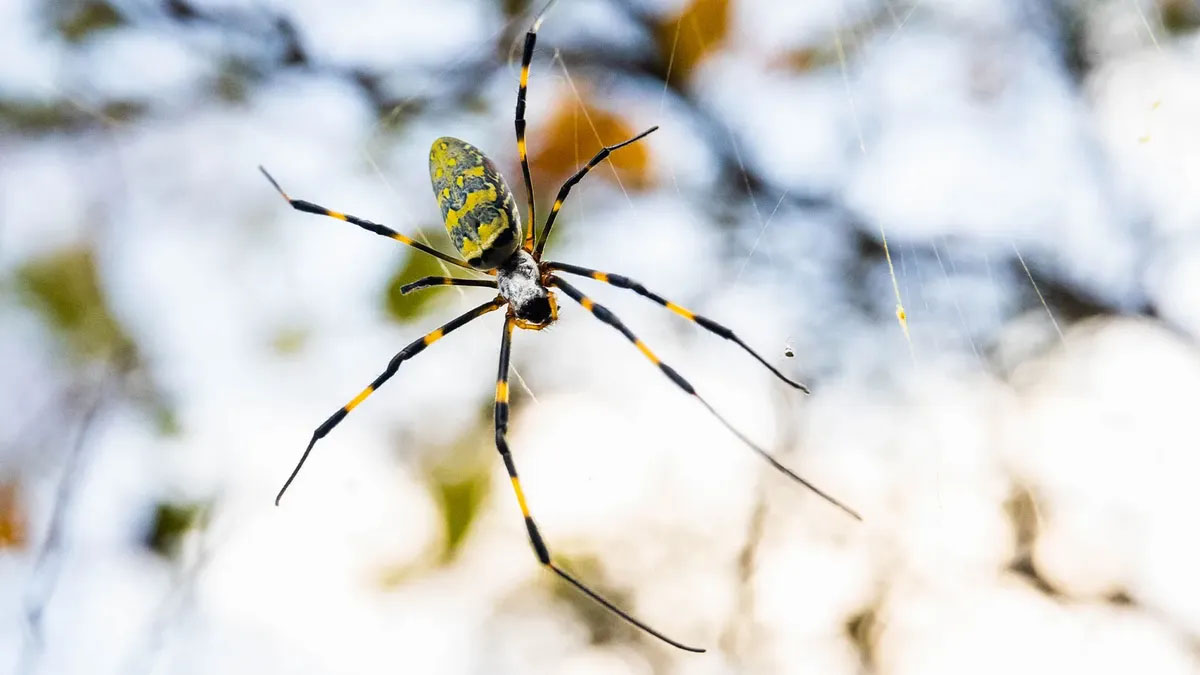
Photo Credit: Getty Images/Gummy Bone
The northeastern United States is preparing for the potential invasion of a giant spider species, sparking both concern and curiosity among residents and experts alike. The Joro spider, originally from East Asia, has been slowly expanding its territory across the southeastern U.S. and is now expected to make its way north. This impending arrival has prompted a range of responses, from scientific interest to public
apprehension.
The Joro spider (Trichonephila clavata) is a striking arachnid known for its vibrant yellow, blue, and red coloration. Female Joro spiders can grow up to three inches in length, including their legs, making them one of the larger spider species to inhabit the U.S. Despite their intimidating size and appearance, Joro spiders are not considered a threat to humans. Their venom is not harmful to people, and they are generally non-aggressive.
First spotted in Georgia in 2014, the Joro spider is believed to have arrived in the U.S. through shipping containers. Since then, it has established a significant presence across the southeastern states. Researchers have been monitoring the spread of the species, noting its
ability to adapt to various climates and habitats.
The spiders are particularly adept at using a process called "ballooning" to disperse. During ballooning, young spiders release silk threads that catch the wind, allowing them to travel long distances. This method of travel, combined with favorable environmental conditions, has facilitated the Joro spider’s northward movement.
While the Joro spider’s arrival might seem alarming, entomologists suggest that their presence could have some positive ecological effects. These spiders are effective at controlling pest populations, as their diet includes a variety of insects, including mosquitoes and agricultural pests. Their large, strong webs can trap a significant number of these insects, potentially reducing the need for chemical pest
control.
However, the introduction of any non-native species comes with risks. There are concerns about how the Joro spider might compete with native
spider species and other wildlife for resources. Ongoing research aims to better understand these interactions and mitigate any negative impacts.
The public reaction to the news of the Joro spider’s potential invasion has been mixed. Some residents express fear and unease at the thought of encountering such large spiders, while others are fascinated by the prospect of observing these colorful arachnids up close. Educational initiatives are being planned to help the public understand the Joro spider and dispel common misconceptions about their threat level.
Local authorities and pest control experts in the northeastern states are gearing up for the Joro spider’s arrival. This includes monitoring programs to track the spread of the spiders and public awareness campaigns to educate residents on how to identify and coexist wit them. Recommendations for homeowners include simple measures like keeping outdoor lights off at night to reduce attracting insects that, in turn, attract spiders.
As the northeastern U.S. braces for the potential invasion of the Joro spider, the situation underscores the importance of understandinand managing the introduction of non-native species. While the Joro spider is unlikely to pose a significant threat to humans, its presence will undoubtedly become a notable part of the region’s ecosystem. By staying informed and taking proactive measures, residents can minimize the impact of this new arachnid neighbor and perhaps even come to appreciate its role in the local environment.